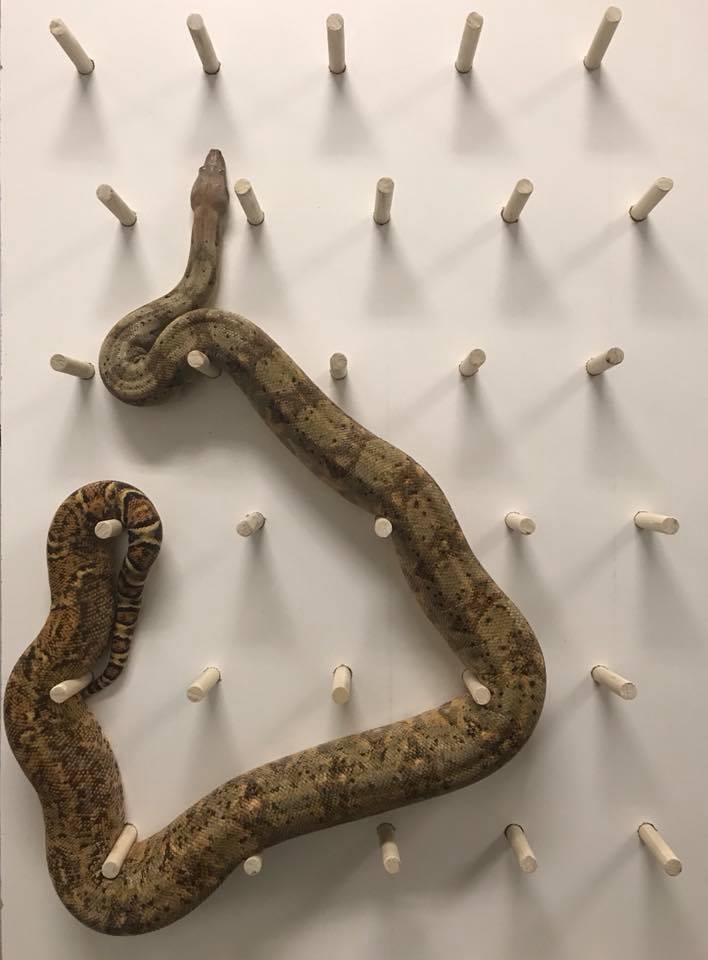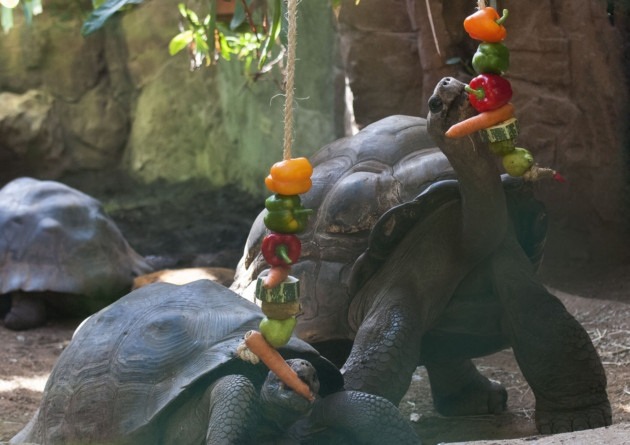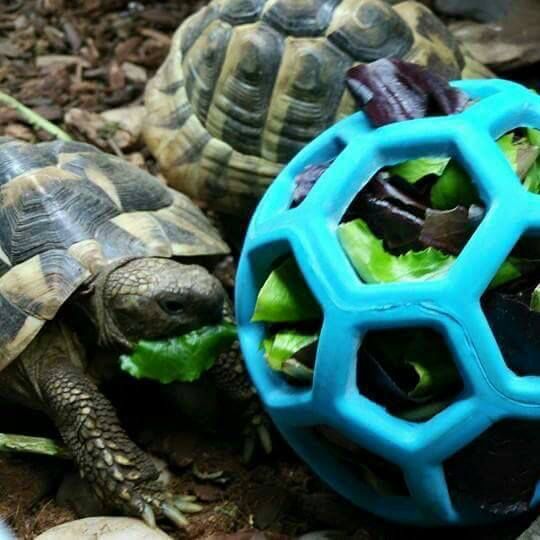What is reptile enrichment?
Many zoos provide enrichment for their captive animals. Essentially, enrichment is entertainment in the form of activities, puzzles or special playtime. The idea is to make sure that captive animals don’t feel bored or stressed. In terms of reptiles kept as pets, enrichment can mean many things and we’ll discuss what those things entail and what you as a reptile owner can do to provide enrichment.

What counts as enrichment?
It might seem strange, but reptiles can get bored. It’s true that repetition helps train them and domesticate them, but our herp friends still need to break up the monotony of captivity. That’s where enrichment comes into play.
Technically, in the context of pet reptiles, enrichment involves several elements. In terms of habitat, it can be defined as enhancing or creating an environment that most accurately mimics that of the wild. In terms of behaviors, it can mean providing your pet with the ability to make choices and perform species-specific activities and instinctive behaviors.
Interestingly enough, enrichment can be anything from the type of food you give your herp to the décor in its cage. It also involves the time you spend with your pet and the opportunities you provide to get outdoors.
Does my reptile need enrichment?
The answer we would like to give to this question is of course, yes. However, truthfully, many species of reptile and amphibian actually don’t need a whole lot of material possessions or maintenance to thrive and be healthy. We are just of the mindset that any pet you own should be given the best care and that means providing experiences that give meaning and for lack of a better term, fun, to your pet’s daily existence.
Most herps really only require a few things to do well as pets: a cage, substrate, food, water, a hide space, and some lighting and/or heat source. Enrichment is simply any extra attention you provide to the environment and your pet.
And we want to be clear that there are certain species that are more “intelligent” or interactive that should definitely be provided with enrichment. These include the larger species that shouldn’t always be kept in a tank such as crocodilians, fully grown iguanas, tegus, large pythons and boas, and grown monitors. Other smart species that we feel should have special enrichment features include but are not limited to: bearded dragons, tortoises (particularly large sulcatas), and chameleons.

Ideas for reptile enrichment at home
The type of enrichment you choose for your herp will vary widely based upon what species you own and how well that particular species interacts with humans on a personal level. Some species such as dart frogs, will be provided enrichment mainly in the form of habitat naturalization. Other species, such as tegus, iguanas or bearded dragons are a lot more people-friendly and will have a wide range of enrichments that the owner can provide.
Below are some very general ideas that you might wish to try out as enrichment for your own pet:
Snake enrichment
It might seem like snakes wouldn’t require much in the form of enrichment. After all, they don’t even have limbs. But, there is one very easy element that most owners can provide that works for almost all arboreal snake species – climbing furniture! You can purchase special items made to put in an enclosure to climb on or you can find your own natural sticks. Some zoos have even created special climbing boards for their larger snakes that resemble Plinko games. The snakes are let loose and allowed to climb the wall by utilizing the pegs that stick out.
Another simple way to add enrichment to your snake’s life is to allow it to explore outdoors (under close supervision of course). Many ball pythons and large boas truly enjoy soaking up the sunshine while crawling through the grass.
Lizard enrichment
Nearly any lizard enclosure can be enriched by making it appear as naturalistic as possible. For tropical species, this could include adding backdrops, living plants, water pools and very moist substrate. Some larger species with large, custom built cages will even enjoy mini waterfalls.
If you have a large lizard such as a fully grown iguana, tegu or monitor, we highly advise that they spend a fair amount of time outside their enclosure.
Tegus can enjoy leash walks, believe it or not. They often behave like puppies and enjoy going places with their owner and quickly learn that leashes are non-threatening. Tegus are also very smart and sometimes learn to play simple games that are based upon sharpening natural behaviors.
Iguanas can be a bit more temperamental, but they still enjoy a good soak in the sunshine. They also usually have very healthy appetites so providing enrichment in the form of a very varied diet is an option.
Amphibian enrichment
Amphibians are the toughest to provide enrichment for. Most frogs, toads and salamanders don’t enjoy being handled by people, so enrichment typically comes in the form of treat food and specialty enclosures.
Many people enjoy crafting a tank that mimics wild environments. Not only does the amphibian enjoy it, but the owner usually gets pleasure from the aesthetic beauty of it.
Meal time enrichment can come in the form of a varied diet of treats and staple foods. Some owners also allow natural feeding methods rather than tong-feeding or dish feeding.

Conclusion
Just like we try to keep our furry friends entertained and happy with toys, treats and outings, we should also strive to provide entertainment in the form of enrichment to our reptilian and amphibian pals.
Although most herps don’t require a lot of space or engagement, it is important to break up the monotony of captivity. We recommend using treat food items, interacting with your pet outside the enclosure if possible, and maybe even playing some games with your pet if they are willing and able. Taking your reptile or amphibian outdoors for some sunshine also counts as enrichment!
